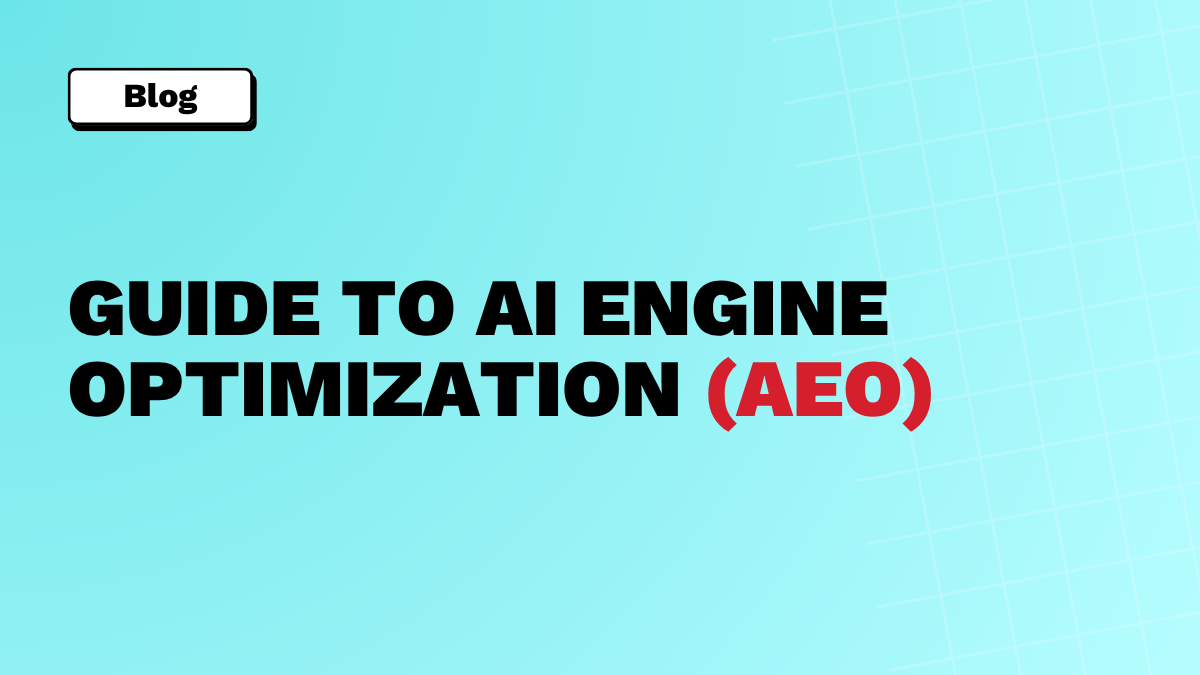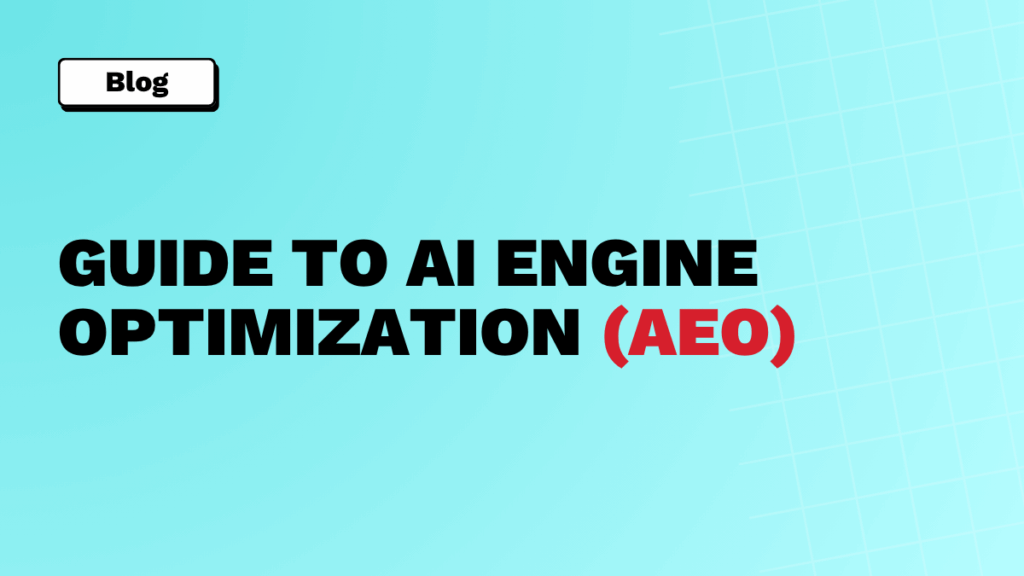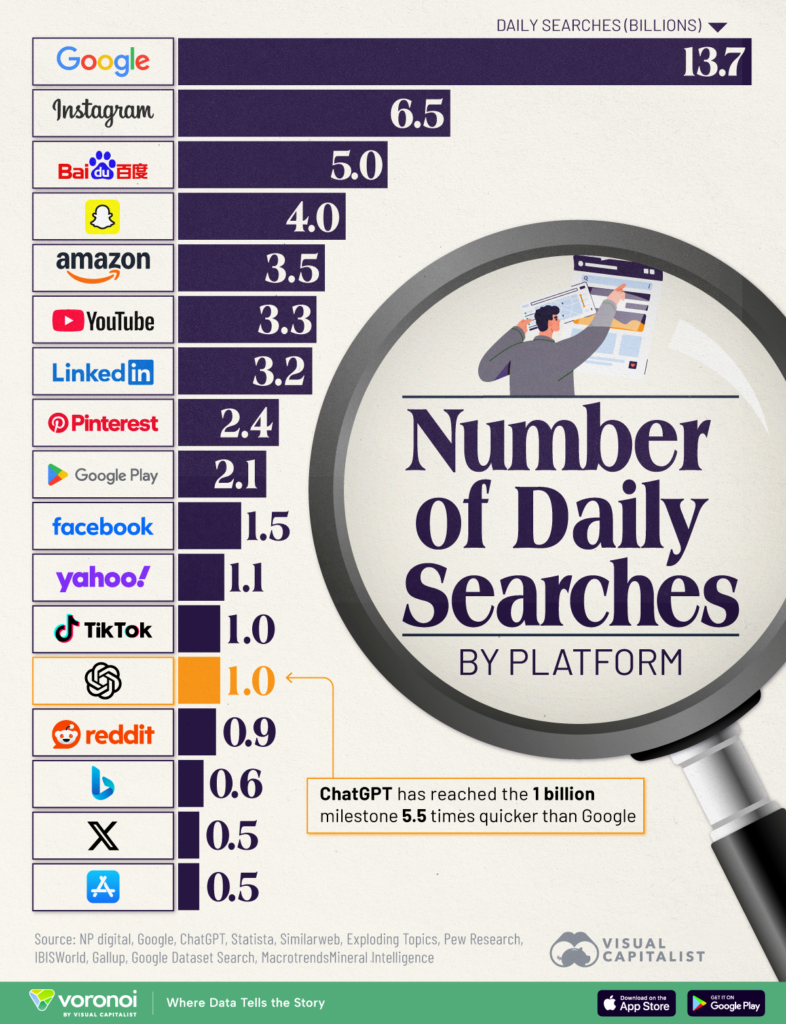Hey there, digital explorers! Noah Evans here from AskByteWise.com, your guide to making complex tech simple. Today, we’re diving into a fascinating corner of the web that’s becoming absolutely essential for anyone looking to stand out online: A Beginner’s Guide to Schema Markup for AEO: How to Talk to AI. If you’ve ever wondered how Google, Bing, and even voice assistants seem to “understand” your website content, or how some search results look so much richer and more informative than others, you’re about to unlock the secret. This guide will demystify Schema Markup, explaining why it’s not just a technical detail but a powerful tool for Answer Engine Optimization (AEO) that helps your content speak directly to the intelligent systems shaping our digital future. Let’s make your website truly fluent in AI!
What Exactly Is Schema Markup? A Simple Explanation
Imagine your website is a bustling marketplace, filled with incredible products, services, and information. When a new customer (or, in our case, a search engine’s AI) walks in, they see all your wonderful offerings. But what if you could give them a personal tour guide, pointing out exactly what each item is, its price, its features, and why it’s special? That’s precisely what Schema Markup does for your website.
In its simplest form, Schema Markup is a specialized code—a bit like digital labels—that you add to your website’s HTML. These labels tell search engines and AI assistants exactly what your content means, not just what it says. Instead of search engines guessing that a series of numbers is a phone number or a date is an event, Schema explicitly tells them: “This is a phone number for the business,” or “This is the start date of an event.”
Think of it this way: When you write “123 Main Street,” a human knows that’s an address. But a machine might just see “numbers and letters.” With Schema Markup, you add a tag that says <span itemprop="streetAddress">123 Main Street</span>. Now, the machine understands it’s a street address, part of a larger PostalAddress, which belongs to a LocalBusiness. This added context is incredibly powerful for AI and search engines.
It’s not about making your website look different to human visitors (though it often leads to richer search results for them); it’s about making your content understandable to the machines that organize the internet. It’s the difference between hearing a foreign language and having a translator explain every nuance.
Why Schema Markup is Critical for Answer Engine Optimization (AEO)
In the past, SEO (Search Engine Optimization) was largely about matching keywords. You typed a query, and Google tried to find pages with those words. Simple, right? But the digital landscape has evolved dramatically. We’re no longer just “searching” for information; we’re asking questions, often in natural language, to sophisticated AI systems like Google Assistant, Alexa, Siri, and even ChatGPT. This shift has given rise to Answer Engine Optimization (AEO).
AEO isn’t just about showing up in search results; it’s about being the direct answer to a user’s question, whether that answer is delivered through a rich snippet, a voice assistant, or directly in a search engine’s knowledge panel. And that’s where Schema Markup becomes absolutely critical.
The Rise of AI and Semantic Search
AI and machine learning are at the heart of modern search. These systems are constantly trying to understand the meaning and context behind your content and a user’s query. This is called semantic search. Schema Markup provides the semantic signals that AI craves.
- For Voice Search: When you ask Alexa, “What’s the best Italian restaurant near me?” she’s not just looking for the words “Italian restaurant.” She’s looking for structured data that clearly identifies local businesses, their cuisine, ratings, and location. Schema makes this possible.
- For Rich Snippets: Have you ever seen a recipe result with star ratings, cooking times, and ingredient lists right in Google? Or a product with its price, availability, and customer reviews? These are rich snippets, and they’re powered by Schema Markup. They make your listing stand out, grab attention, and significantly increase click-through rates.
- For Knowledge Panels: When you search for a famous person or a company, Google often displays a detailed box of information on the right side of the search results page. This “Knowledge Panel” is often populated by data gleaned from Schema Markup and other trusted sources.
- For “People Also Ask” Sections: Schema can also help your content appear in these valuable sections by clearly defining questions and answers on your page.
Essentially, without Schema Markup, your content is like a brilliant book with no table of contents, no index, and no chapter titles. It’s all there, but it’s hard for anyone (especially an AI) to quickly find and understand the most important parts. With Schema, you’re not just publishing content; you’re publishing structured, machine-readable knowledge that AI can easily process and present.
Noah’s Insight: Think of Schema Markup as your website’s diplomatic passport. It allows your content to communicate fluently and officially with the world’s most powerful digital entities – search engines and AI. In the age of AEO, it’s no longer a nice-to-have; it’s a must-have for visibility and success.
How Schema Markup Works: The Language AI Understands
Schema Markup isn’t a proprietary Google technology; it’s a collaborative effort from major search engines (Google, Microsoft, Yahoo, and Yandex) to create a universal language for structured data. This language is hosted at Schema.org, which provides a comprehensive vocabulary of properties and types that you can use to describe your web content.
The Three Main “Dialects”: JSON-LD, Microdata, and RDFa
While all three achieve the same goal of marking up your content, they do so in slightly different ways. For beginners, JSON-LD is almost always the recommended approach due to its simplicity and flexibility.
-
JSON-LD (JavaScript Object Notation for Linked Data): This is the rockstar of Schema Markup. It’s a snippet of JavaScript code that you typically place in the
<head>or<body>section of your HTML. It’s separate from your visible content, making it cleaner and easier to implement without altering your page’s visible structure.- Analogy: JSON-LD is like writing a separate, very clear summary sheet for your website content and handing it directly to the AI. It’s concise and to the point.
- Example Snippet (simplified):
<script type="application/ld+json"> { "@context": "https://schema.org", "@type": "Recipe", "name": "Grandma's Chocolate Chip Cookies", "author": { "@type": "Person", "name": "Noah Evans" }, "prepTime": "PT20M", "cookTime": "PT15M" } </script>You can see how this clearly defines the type (
Recipe), its name, author, and times.
-
Microdata: This method embeds Schema properties directly into the HTML tags of your visible content. It uses attributes like
itemscope,itemtype, anditemprop.- Analogy: Microdata is like labeling every single item on your shelf in the marketplace itself. It’s integrated but can make your HTML look a bit cluttered.
-
RDFa (Resource Description Framework in Attributes): Similar to Microdata, RDFa also embeds attributes within existing HTML tags. It’s less commonly used today, especially by beginners, compared to JSON-LD.
- Analogy: RDFa is another way of labeling items on your shelf, but with a slightly different set of stickers.
For most modern implementations, especially for beginners and those looking for the cleanest code, JSON-LD is the preferred method. Google explicitly recommends it.
Common Schema Types and Their Superpowers
Schema.org offers a vast library of “types” (categories) you can use to describe almost anything on the web. Here are some of the most popular and powerful types for AEO:
- Article/BlogPosting: For blog posts, news articles, and general informational content. Helps search engines understand the nature of your written content.
- Recipe: Crucial for food blogs and cooking websites, enabling rich results with star ratings, cook times, and ingredients.
- Product: Essential for e-commerce sites, displaying price, availability, reviews, and product images directly in search.
- LocalBusiness: A must for any brick-and-mortar business, providing address, phone number, opening hours, and location on a map.
- Organization: For companies, non-profits, or other organizations, giving details about their official name, logo, and contact info.
- Person: For authors, speakers, or individuals, detailing their name, job title, and affiliations.
- Event: For concerts, webinars, conferences, or any scheduled happening, showing dates, times, and venue.
- FAQPage: For pages with frequently asked questions, allowing Google to display these Q&A pairs directly in search results and for voice search.
- VideoObject: For marking up videos, making them more discoverable in video search results.
Properties: Adding Detail to Your Digital Story
Once you choose a type (e.g., Recipe), you then use properties to describe its specific attributes. Each type has a set of relevant properties defined on Schema.org.
For example, a Recipe type might have properties like:
name(of the recipe)descriptionauthor(who created it)aggregateRating(star rating)prepTimecookTimerecipeIngredientrecipeInstructions
These properties are like the specific fields you fill out in a form. The more accurately and comprehensively you fill them out, the better AI can understand and utilize your content.
Practical Examples: Seeing Schema Markup in Action
Let’s look at how Schema Markup actually works on real websites and the visible impact it has.
Example 1: Marking Up a Recipe for Rich Results
Imagine you run a cooking blog. Without Schema, your recipe for “Classic Chocolate Chip Cookies” might appear in Google search like any other blog post.
Without Schema:
Classic Chocolate Chip Cookies - My Cooking Blog
www.mycookingblog.com/chocolate-chip-cookies
Learn how to make the best chocolate chip cookies with our easy recipe. Includes ingredients and step-by-step instructions.
Now, with Recipe Schema Markup (using JSON-LD), your search result can transform into a rich snippet:
With Recipe Schema (Rich Snippet):
`**Classic Chocolate Chip Cookies**`
`★★★★★ 4.8 (120 reviews) | Prep: 20 min | Cook: 15 min`
`www.mycookingblog.com/chocolate-chip-cookies`
`Our easy-to-follow recipe guarantees perfect chocolate chip cookies every time. Get the full list of ingredients and instructions here.`
Notice the stars, the review count, and the clear prep/cook times. This information is pulled directly from your Schema Markup, making your listing far more appealing and informative at a glance. It directly answers questions like “How long does it take?” before a user even clicks.
Example 2: Highlighting Your Local Business
If you own a local coffee shop called “The Daily Grind,” you want people searching for “coffee shops near me” to find you. LocalBusiness Schema is your best friend.
Without Schema:
The Daily Grind - Best Coffee in Town
www.thedailygrindcoffee.com
Serving delicious coffee, pastries, and a cozy atmosphere. Come visit us!
With LocalBusiness Schema (Rich Snippet/Knowledge Panel data):
`**The Daily Grind**`
`★★★★★ 4.9 (500+ reviews) | Open until 5 PM`
`www.thedailygrindcoffee.com`
`**Address:** 123 Coffee Lane, Anytown, USA`
`**Phone:** (555) 123-4567`
`**Directions · Menu · Order Online**`
This rich result, often appearing in the local pack or a knowledge panel, provides immediate, actionable information: reviews, opening hours, address, and even direct links for directions or ordering. This is pure AEO at work, answering direct user needs without them even having to visit your site first.
Example 3: Q&A Schema for FAQs and Voice Search
If your website has an FAQ page, marking it up with FAQPage Schema can be incredibly powerful for AEO.
Without Schema:
FAQ - Your Questions Answered
www.yourwebsite.com/faq
Find answers to common questions about our products and services.
With FAQPage Schema (Expanded Search Result):
**FAQ - Your Questions Answered**
www.yourwebsite.com/faq
> **What is your return policy?**
> We offer a 30-day money-back guarantee...
> **How can I contact customer support?**
> You can reach us via phone or email...
> **Do you offer international shipping?**
> Yes, we ship to over 50 countries...
These expandable FAQ sections in search results directly answer user questions, satisfying their intent instantly and potentially positioning your brand as the authoritative source. For voice search, an AI assistant could directly read out these answers.
Getting Started with Schema Markup: Tools and Best Practices
Implementing Schema Markup might sound daunting, but many tools make it surprisingly easy, even for non-technical users.
Easy Ways to Implement Schema Markup
-
WordPress Plugins: If your website runs on WordPress (and most small businesses do!), plugins are your simplest solution.
- Yoast SEO: This popular plugin includes basic Schema functionality for articles, organizations, and people. It often automatically adds
ArticleandOrganizationSchema. - Rank Math SEO: Another excellent SEO plugin that offers more extensive Schema options, allowing you to easily add various Schema types to different pages and posts.
- Schema & Structured Data for WP & AMP: A dedicated plugin that gives you granular control over adding almost any Schema type to your content.
- How to use: Install the plugin, navigate to the page/post editor, and you’ll often find a “Schema” or “Structured Data” tab or section where you can select the content type (e.g., “Recipe,” “Product”) and fill in the relevant fields. The plugin then generates the JSON-LD code for you.
- Yoast SEO: This popular plugin includes basic Schema functionality for articles, organizations, and people. It often automatically adds
-
Google’s Structured Data Markup Helper: This free tool from Google is fantastic for manual implementation or understanding how Schema works.
- How to use: Go to Google’s Structured Data Markup Helper. Select the type of data you want to mark up (e.g., Articles, Local Businesses, Products). Paste your page’s URL or HTML. Then, highlight elements on your page (like a product name, price, or author) and assign them to their corresponding Schema properties in the tool. Once you’re done, it generates the JSON-LD or Microdata for you to copy and paste into your website’s code.
-
Manual JSON-LD: For more advanced users or highly customized needs, you can write the JSON-LD yourself. Use Schema.org as your reference to understand the types and properties.
- Tip: Start with a simple template for a
WebPageorArticletype and gradually add more specific types as you get comfortable.
- Tip: Start with a simple template for a
Testing Your Schema Markup: Ensuring AI Gets It Right
Implementing Schema is only half the battle; you need to ensure it’s correctly interpreted by search engines. Luckily, Google provides free tools for this:
-
Rich Results Test: This is your go-to tool. Paste your URL or code snippet, and it will tell you if your Schema is valid and what rich results it’s eligible for. It also flags any errors or warnings.
-
Schema.org Validator: While less focused on Google’s rich results specifically, this tool helps validate the general syntax and structure of your Schema Markup against the Schema.org vocabulary.
- Access: validator.schema.org
Noah’s Pro Tip: Always test your Schema Markup after implementation! Even a tiny typo can render your structured data ineffective. Think of it as proofreading a very important letter to an AI.
Common Mistakes to Avoid
- Markup Hidden Content: Don’t use Schema to mark up content that’s not visible to users on your page. Search engines can penalize this.
- Irrelevant Markup: Only mark up content that truly exists on the page. Don’t add a “review” Schema if there are no user reviews displayed.
- Incomplete Markup: While not always an error, incomplete Schema (e.g., marking up a recipe without ingredients or cook time) might not qualify for rich results. Strive for completeness.
- Incorrect Nesting: Ensure your Schema types are properly nested. For example, an
Offerfor aProductshould be nested within theProducttype. - Outdated Information: If your prices or event dates change, make sure your Schema Markup is updated accordingly. Inaccurate Schema is worse than no Schema.
Summary & Key Takeaways
We’ve covered a lot of ground today, but the core message is clear: Schema Markup is a foundational element of modern AEO and a powerful way to make your content genuinely understandable to AI and search engines.
Here’s a quick recap of what we’ve learned:
- Schema Markup is digital labeling: It provides explicit context to your website content, helping machines understand its meaning.
- It’s crucial for AEO: In an age of voice search, rich snippets, and AI-driven answers, Schema allows your content to be found, understood, and directly presented to users. It’s how you “talk to AI.”
- JSON-LD is your friend: It’s the recommended and easiest way to implement Schema Markup.
- Variety of types: Schema.org offers a vast vocabulary for marking up everything from articles and recipes to local businesses and FAQs.
- Tools make it easy: WordPress plugins and Google’s Structured Data Markup Helper simplify implementation.
- Always test: Use Google’s Rich Results Test to ensure your Schema is valid and effective.
By embracing Schema Markup, you’re not just optimizing for today’s search engines; you’re building a future-proof foundation for your online presence, ensuring your valuable content is understood and appreciated by the intelligent systems that shape how we discover information. Start experimenting with Schema today, and watch your website become a fluent speaker in the language of AI!
Ready to dive deeper into AEO strategies? Check out our comprehensive guide on [Answer Engine Optimization (AEO): Mastering the Future of Search]([Link to AskByteWise.com/AEO-Pillar-Page]) for more insights!
Frequently Asked Questions (FAQ)
Q1: Do I need coding knowledge to implement Schema Markup?
A1: Not necessarily! While Schema involves code, tools like WordPress plugins (e.g., Yoast, Rank Math) and Google’s Structured Data Markup Helper allow you to add Schema without writing a single line of code yourself. They provide user-friendly interfaces where you select types and fill in fields, then generate the code for you.
Q2: Will Schema Markup directly improve my search engine rankings?
A2: Schema Markup doesn’t directly act as a ranking factor in the traditional sense (like backlinks). However, it indirectly and significantly improves your visibility and click-through rates. By enabling rich snippets and other enhanced search results, your listings become more appealing and informative, drawing more clicks. Higher click-through rates (CTR) can signal to search engines that your content is highly relevant and valuable, which can positively influence rankings over time. More importantly, it helps you appear in AEO results (direct answers, voice search).
Q3: Can Schema Markup cause penalties from Google?
A3: Yes, if misused. Google has strict guidelines for structured data. Penalties can occur if you:
- Mark up content that isn’t visible to users.
- Use irrelevant or misleading Schema (e.g., marking up a blog post as a product).
- Provide incomplete or incorrect information that doesn’t accurately reflect your page content.
Stick to the guidelines, accurately represent your content, and always use Google’s Rich Results Test to avoid issues.
Q4: How often should I update my Schema Markup?
A4: You should update your Schema Markup whenever the underlying content it describes changes. For example:
- If product prices or availability change on an e-commerce site.
- If event dates, times, or venues are altered.
- If your local business hours or contact information are updated.
For static content like articles, less frequent updates are needed, but it’s good practice to review your Schema periodically to ensure accuracy.
Q5: What’s the difference between structured data and Schema Markup?
A5: Structured data is a general term for any data that is organized and easy for machines to process. It can be in various formats (like CSV files, databases, or JSON). Schema Markup (or Schema.org vocabulary) is a specific type of structured data that uses a standardized vocabulary to describe web content, making it understandable to search engines. So, all Schema Markup is structured data, but not all structured data is Schema Markup. Think of structured data as the broad category of “organized information,” and Schema Markup as a specific, universally agreed-upon “language” within that category for web content.
See more: A Beginner's Guide to Schema Markup for AEO: How to Talk to AI.
Discover: AskByteWise.



